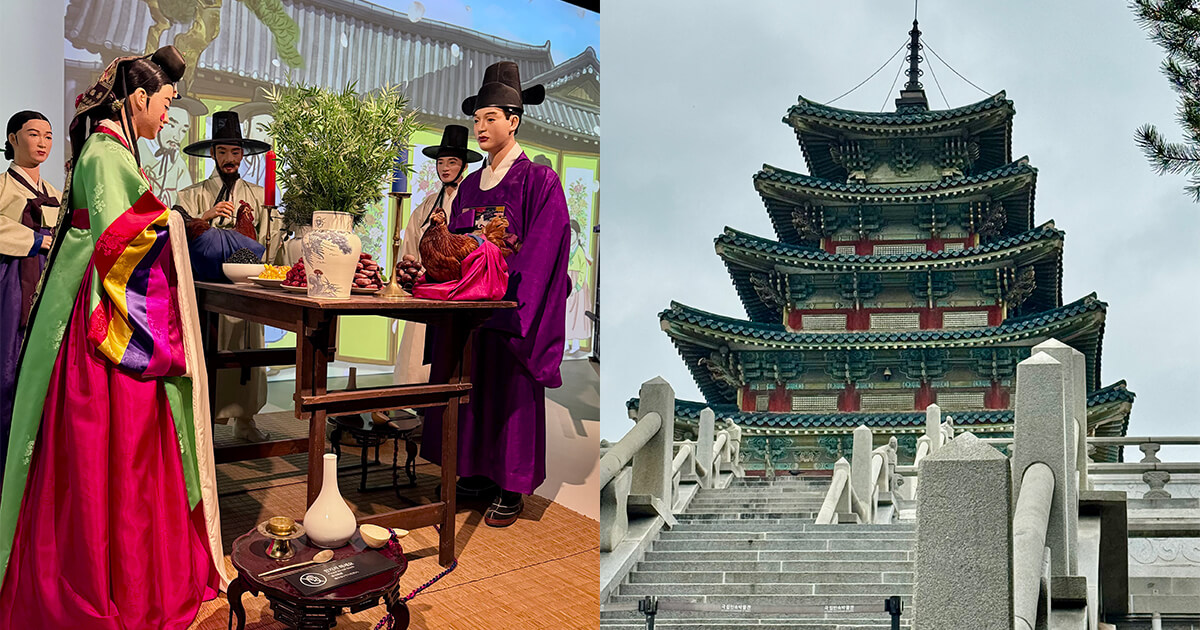Because of the Korean wave unleashed by K-pop and K-drama, South Korea has K-laimed a huge chunk of the world—women and men in search of the holy grail for skin care, shopping, eating, sightseeing…and oppas!
Virtually all the K-drama hits (from Hometown Cha Cha Cha to The King’s Affection to Mr. Sunshine) I’ve viewed show South Korea’s beautiful scenery, attracting millions to visit these sights—perhaps in fervent hopes of having a glimpse not just of the lakes and cherry blossoms but of the oppas who stroll beside them, too?
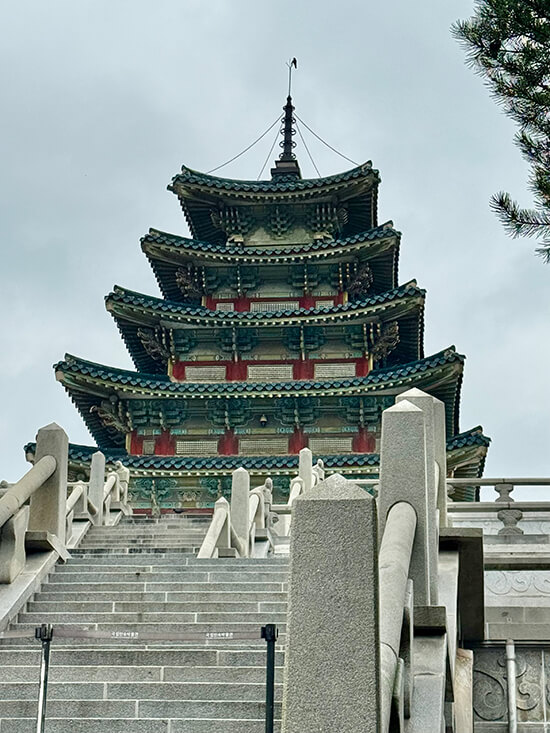
This five-story pagoda crowns the National Folk Museum of Korea on grounds of Gyeongbokgung Palace in Seoul. It is a modern reconstruction inspired by traditional Korean stone and wooden pagoda forms from the Joseon Dynasty.
In 2024, 16.37 million foreign tourists visited South Korea. Of these, 531,099 were Filipino visitors. (On the other hand, some 468,337 South Korean travelers visited the Philippines from January to April this year.)
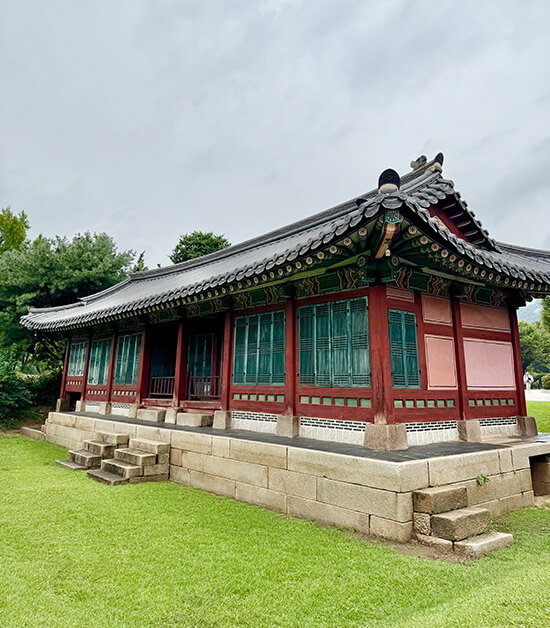
A restored royal guesthouse (hanok) showing classic Joseon-era palace architecture.
I travelled recently with friends Joije Dingcong and Pops Fernandez to South Korea, which will always be to me, “the land of Hyun Bin,” whom Jojie and I met in the flesh recently at the Solaire Resort. Thank God we didn’t crash-land in Seoul’s Incheon Airport—we had a pretty smooth landing there aboard an Asiana jetliner.
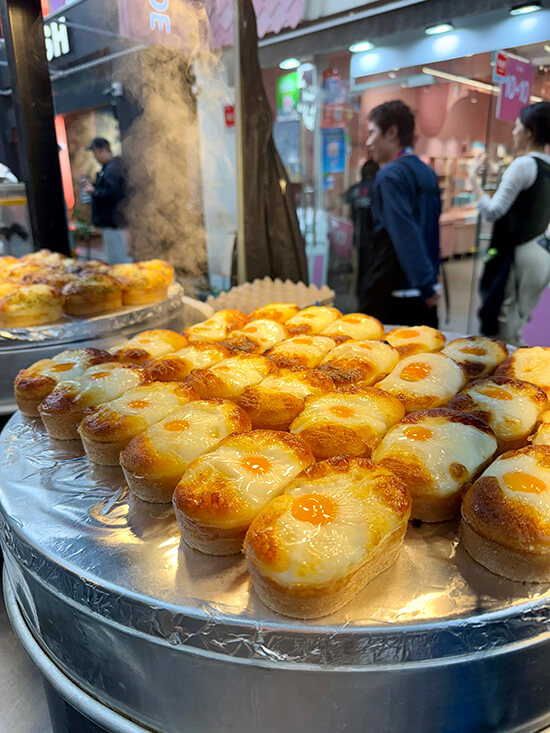
Egg sandwiches sizzling in a night market in Myeongdong.
Incheon is about an hour away from the city, specifically the Myeongdong district, where we were billeted at the Lotte Hotel. The hotel is right smack in a shopping district, and near a pedestrian street that sizzles with food stalls selling everything from mochi to deep-fried potato swirls dipped in cheese powder; from butter shrimp balls to chicken barbecue. Average price is 5,000-6,000 won (around $3.5 to $4.2) per stick or mini plate. The food vendors cook their specialties in gas-fired stoves inside colorful stalls. Some stalls also sell leather goods and ready-to-wear.
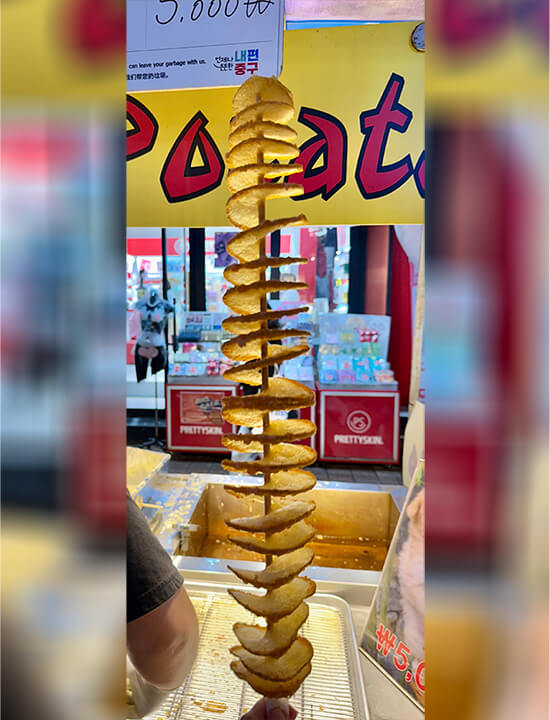
Let’s do the twist in Myeongdong.
To get to the food market from Lotte, one may either cross the wide streets (the tree-lined sidewalks are also wide and clean and have art installations in many corners around which you can rest and even charge your phones) or traverse a brightly-lit underpass filled with shops selling souvenirs, handicrafts, clothes, and footwear. Seoul is clean.
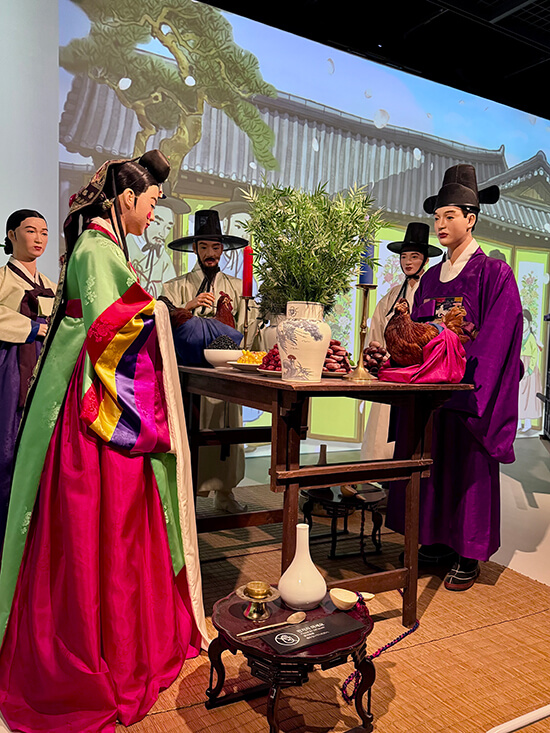
A life-sized diorama of a bride and groom in a chorye or drinking ceremony.
Even before I packed for my four-day trip, I was all but admonished by my sister Valerie Sotto, “Do not miss Olive Young, it’s the Korean Sephora.” I agree except that whereas I think Sephora is largely about makeup, Olive Young is also about skin care, hair care and makeup— about 60% skin care IMHO. It even has some drugstore essentials, so some say it’s also like the Korean CVS. I embarked on a “pilgrimage” to four Olive Young branches in hopes I, too, would get that porcelain glass skin Korean women—and men—have so effortlessly. In Seoul alone, there are reportedly as many as 195 Olive Young stores. I zeroed in on Rejuran, whose key ingredient is the “c-PDRN,” derived from wild salmon DNA, a buzzword in Manila. You will revel in the buffet of creams, ampules, moisturizers on shelf after shelf after shelf.
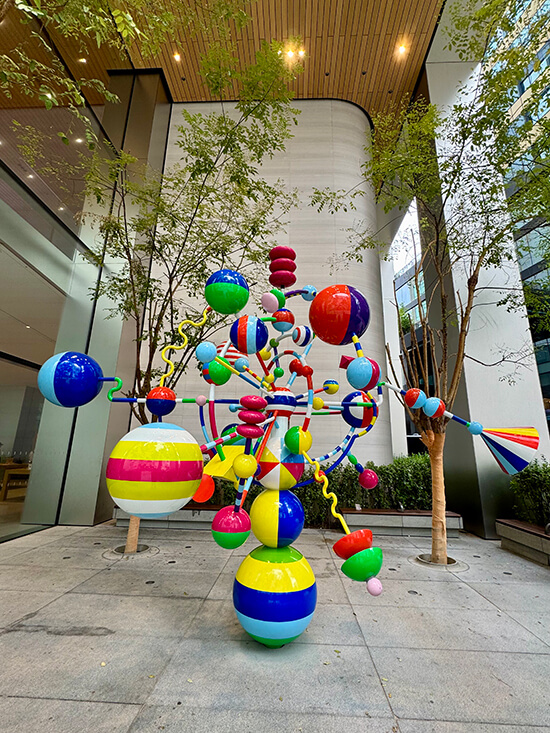
Art installations brighten up many corners of Seoul.
There is also a Lululemon shop as well as boutiques selling Korean-made RTW in Myeongdong. In the mall and department store adjacent to the Lotte, all the popular brands like Alo and Uniqlo as well as more high-end brands like Hermes and Prada also entice shoppers.
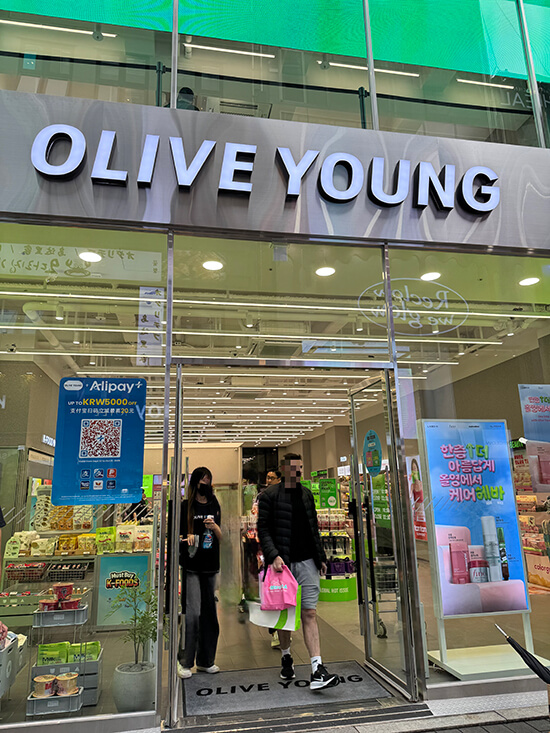
The holy grail of skin worshippers
Myeongdong is peppered with Korean hotpot and shabu-shabu places that serve steaming soups and thick slabs of steak as well as paper-thin ones. Koreans seem to be meat eaters, walk a lot, and eat the ubiquitous kimchi to aid in their digestion.
I asked Jojie why he loves Seoul, he once said while we were walking down the street, “I could live here!”
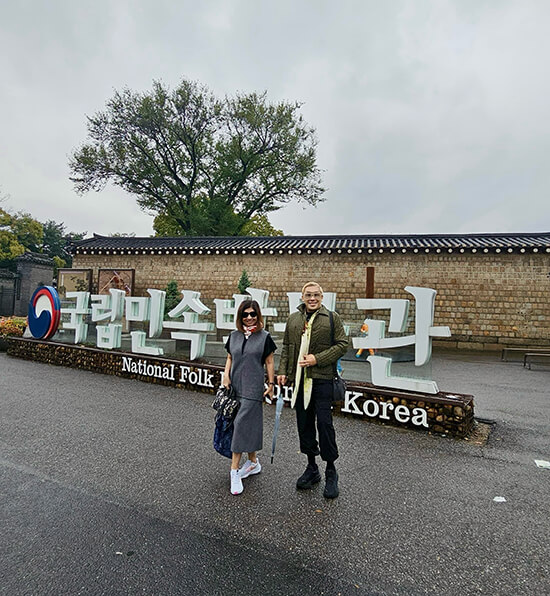
The author with Jojie Dingcong
“Korea’s zeitgeist is truly in constant hyper evolution… it’s one strong revolution if I might add. What an exciting time for a country that has evolved its unique pop culture that the world is embracing fully now. The Korean vibe is uniquely its own…the energy is modern… yet the ‘feels’ of nationalistic local fervor is so highly engaging…”
Jojie adds, “A noteworthy observation… Korea redefined masculinity in the modern age, too. It can be soft and sometimes almost feminine, yet with such a gentle projection, you can still sense so much fervor of strength. It’s just soft yet so powerful!”
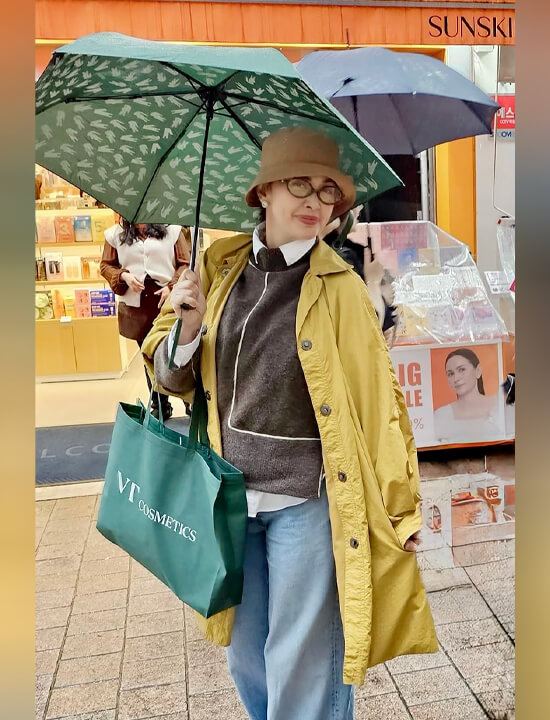
Pops Fernandez singing in the rain
The leaves were slowly turning to orange and gold when we were in Korea in mid-October, and it often rained. But no floods in Seoul, just a wave of good, affordable food; stylish affordable clothes as well as pricey couture; a transportation system that works; an airport that dazzles; a reverence for history. The only thing that disappointed me is that I didn’t get a glimpse of Hyun Bin.
